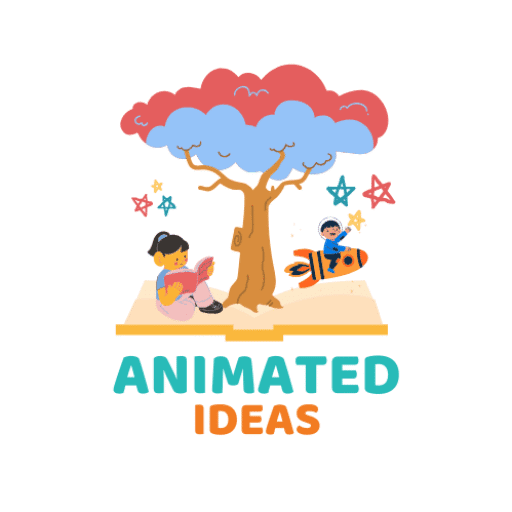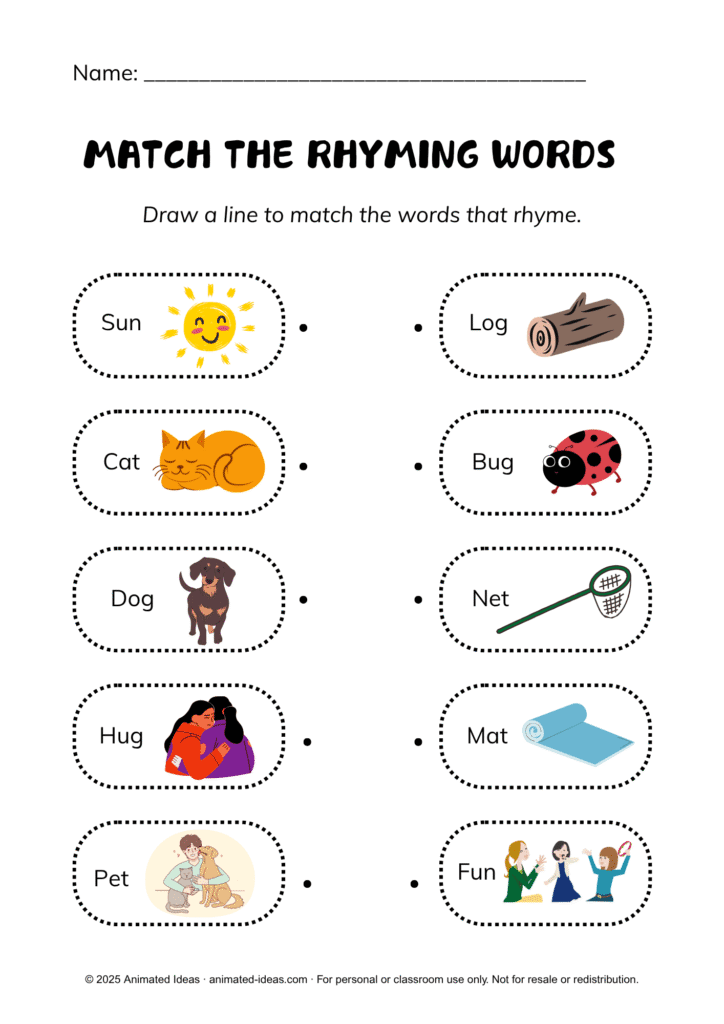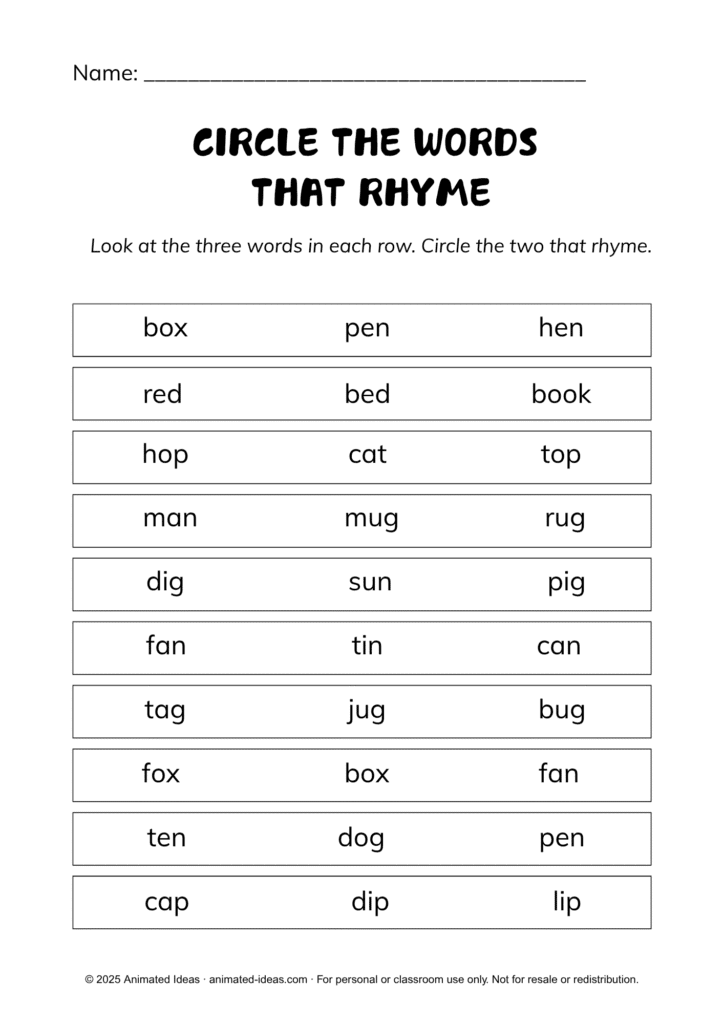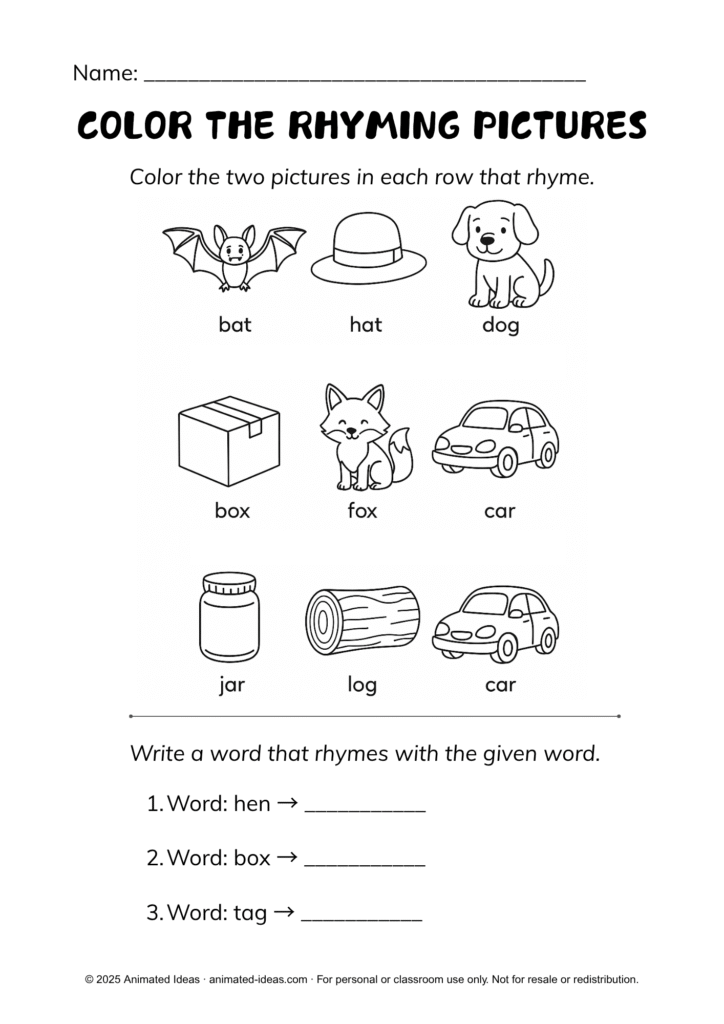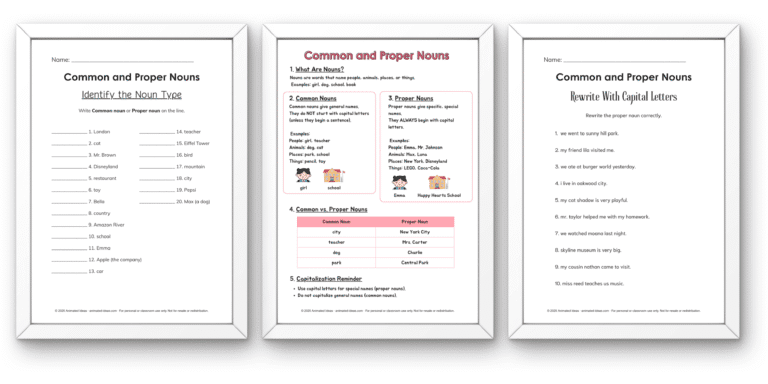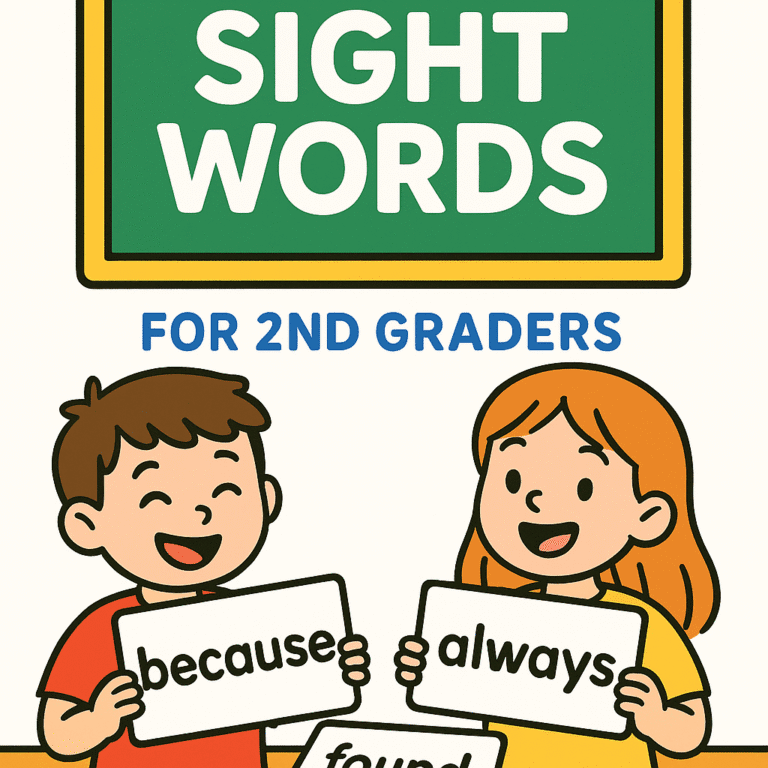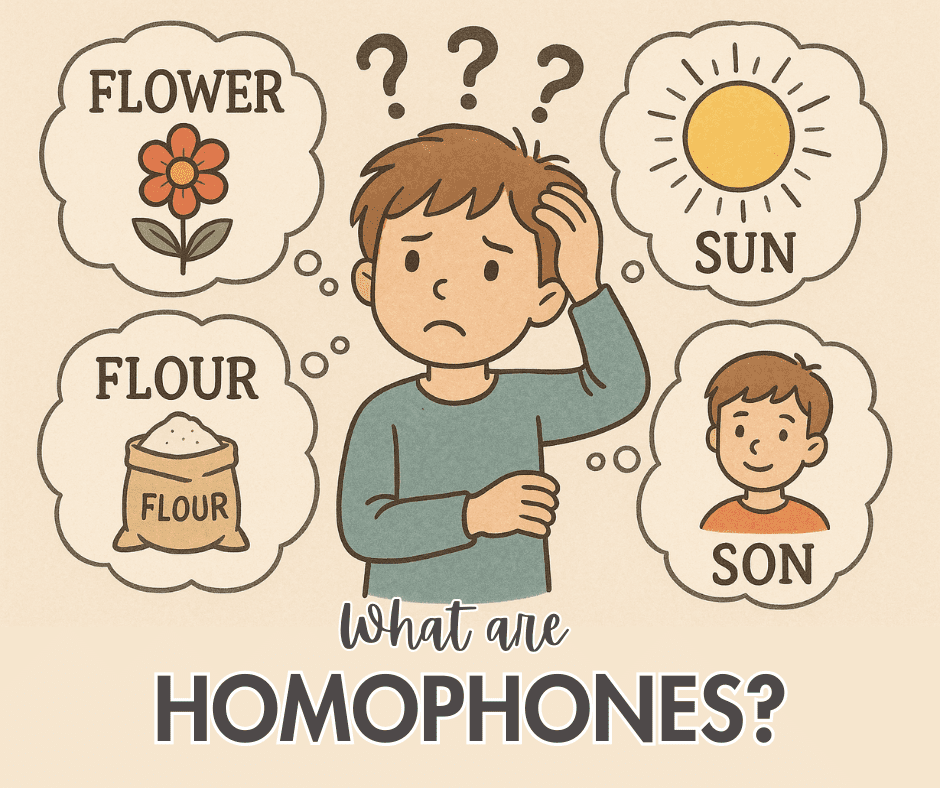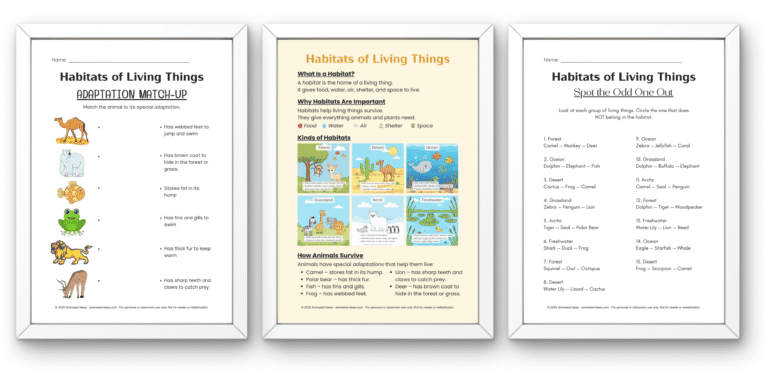Rhyming Worksheets for 2nd Graders – Free Printable Activities
Boost reading, spelling, and creativity with this fun, teacher-approved rhyming worksheets for 2nd Graders.
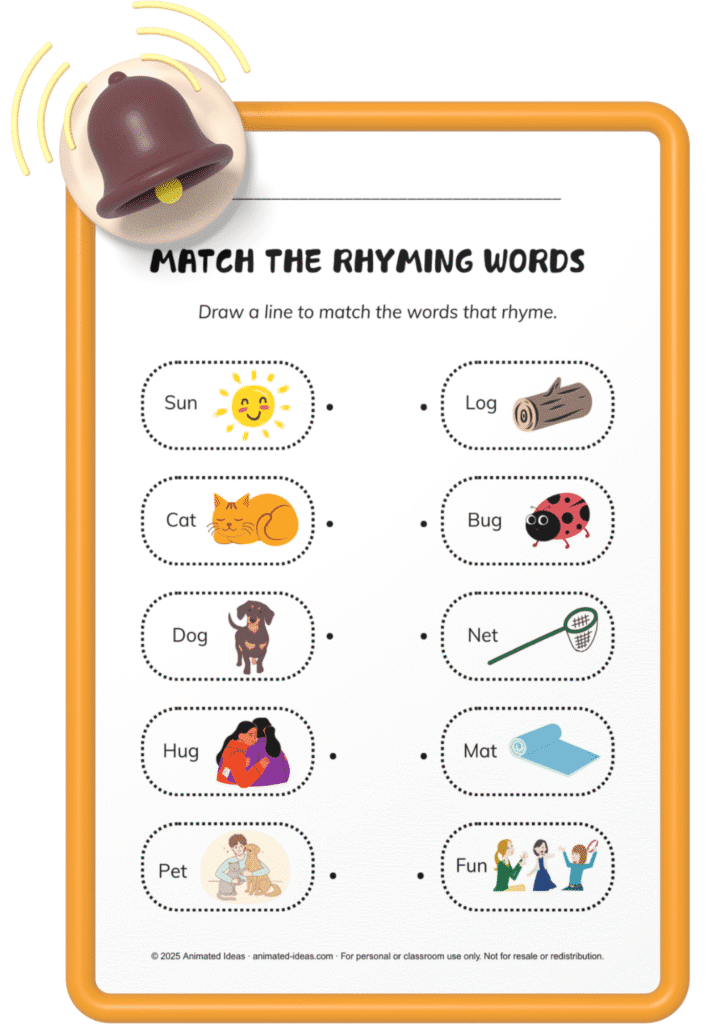
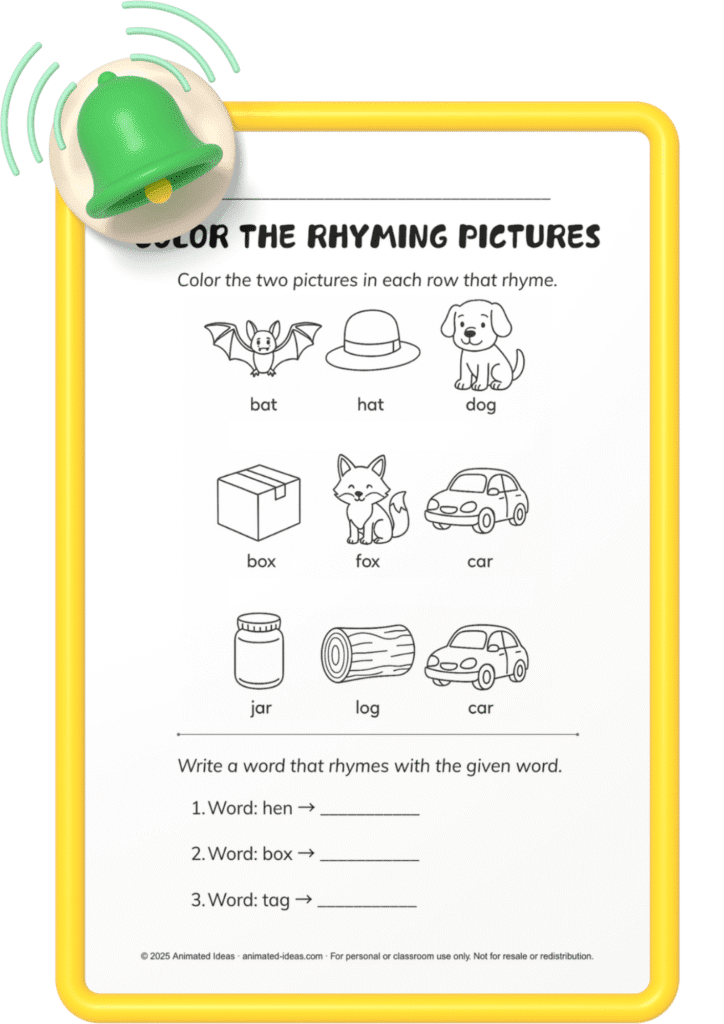
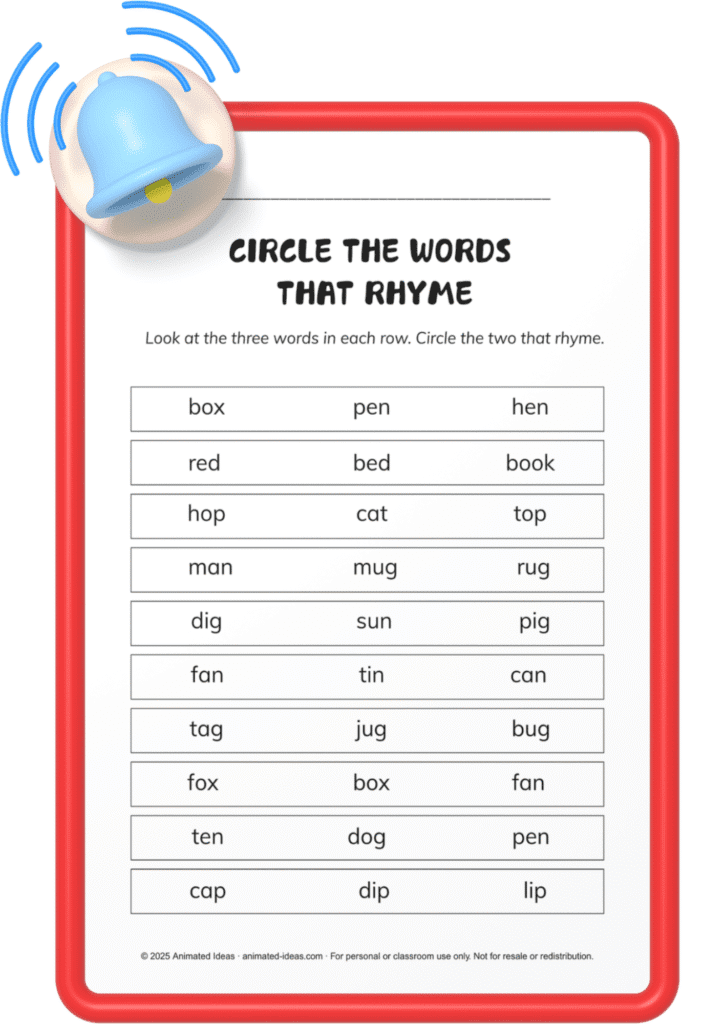
Quick FAQ: Rhyming for 2nd Grade Learners
Why Rhyming Matters in 2nd Grade
By second grade, children are ready to move beyond basic sounds into more advanced language skills. Rhyming gives them a fun, memorable way to connect words, which strengthens their reading and writing abilities.
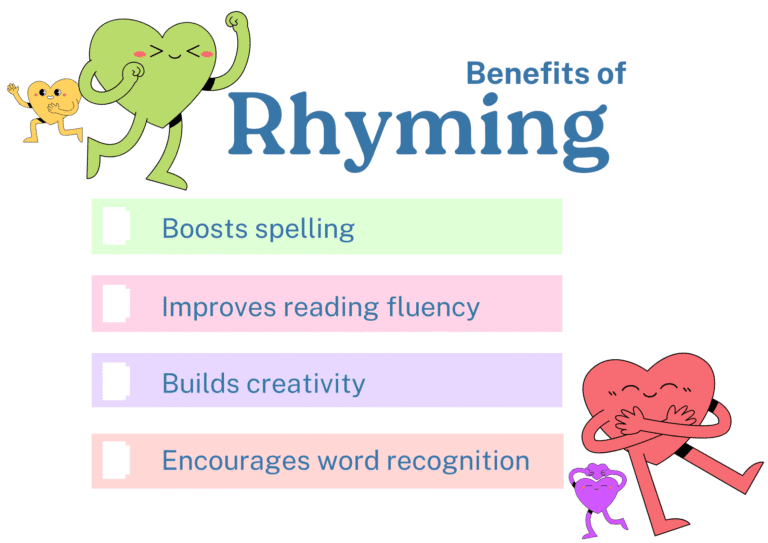
Here are real examples of rhyming words used in fun sentences.
- The cat wore a hat while chasing a rat. – cat, hat, rat
- The dog jumped on a log and saw a frog. – dog, log, frog
- The bee drank tea by the tree. – bee, tea, tree
- I see a mouse in the house. – mouse, house
- The sun is bright, it feels just right. – bright, right
- A fox in socks ran past the box. – fox, socks, box
Free Rhyming Words Worksheet for Grade 2
The Animated Ideas Rhyming Words Worksheet for Grade 2 is a teacher-favorite resource because it’s:
- Printable — ready for immediate classroom or home use
- Kid-friendly — colorful and easy to understand
- Focused — matches and creates rhyming pairs to reinforce skills
- Completely free — no sign-up barriers
Best Practices for Teaching Rhyming in 2nd Grade
Teaching rhyming helps children recognize word patterns, improve spelling, boost reading fluency, and spark creativity. Here are some practical strategies educators and parents can use:
- Start with High-Frequency Rhymes
Use familiar words like cat, ball, and tree before introducing less common ones. This helps children grasp patterns quickly. - Integrate Rhyming with Phonics
Teach rhyming alongside word families so children can apply the skill to reading and spelling.
Here are some examples:
-at family: cat, hat, bat, mat
-ake family: cake, lake, make, bake
-ing family: sing, ring, king, wing
-op family: hop, top, mop, stop
-ight family: light, night, kite, sight - Mix Oral and Written Practice
Let kids say rhyming words out loud and also write them down. For example, the teacher says “play”, and the kids say a word that rhymes, like “day”. Then they can write it on paper.
Doing both speaking and writing helps children hear, say, and spell rhyming words, making learning easier and more fun. - Use Themed Rhyming Lists
Connect rhymes to topics children enjoy—animals, food, or seasons—to keep lessons engaging and fun. - Encourage Creative Output
Let students invent silly rhymes or short poems. This strengthens phonemic awareness and builds imagination.
By following these tips and using plenty of fun examples, teaching rhyming becomes interactive, engaging, and effective, giving children a strong foundation for reading and writing.
Final Thought
Rhyming is a foundational skill for reading success, and the right resources make it easy to teach. By combining interactive worksheets with phonics-based practice and creative play, you can help 2nd graders master rhymes while enjoying the process.
👉 Download your free printable now: Rhyming Words Worksheet for Grade 2 – Animated Ideas
